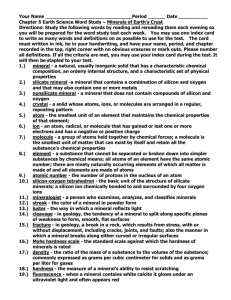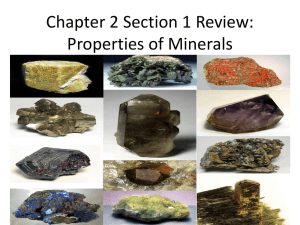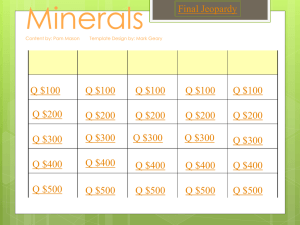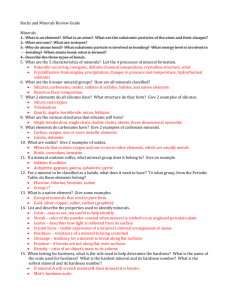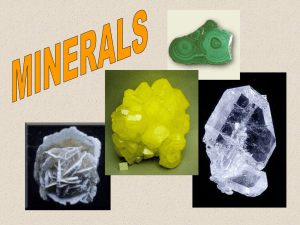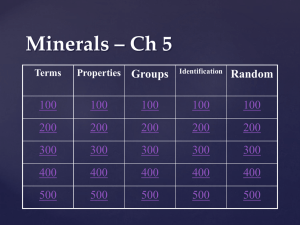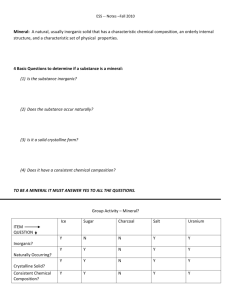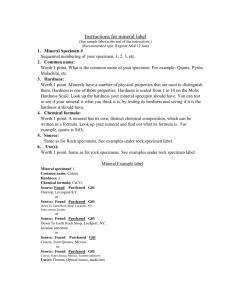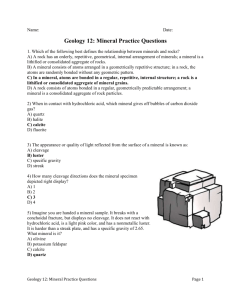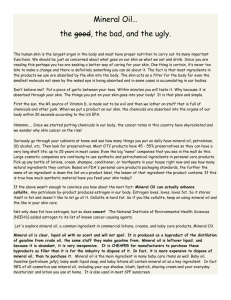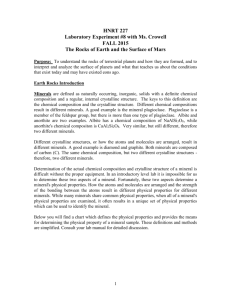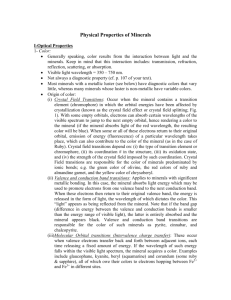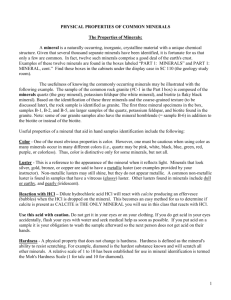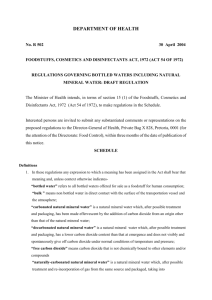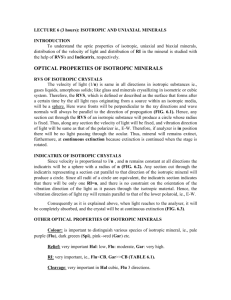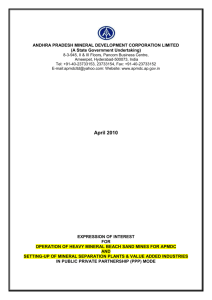pHYSICAL PROPERTIES OF MINERALS
advertisement
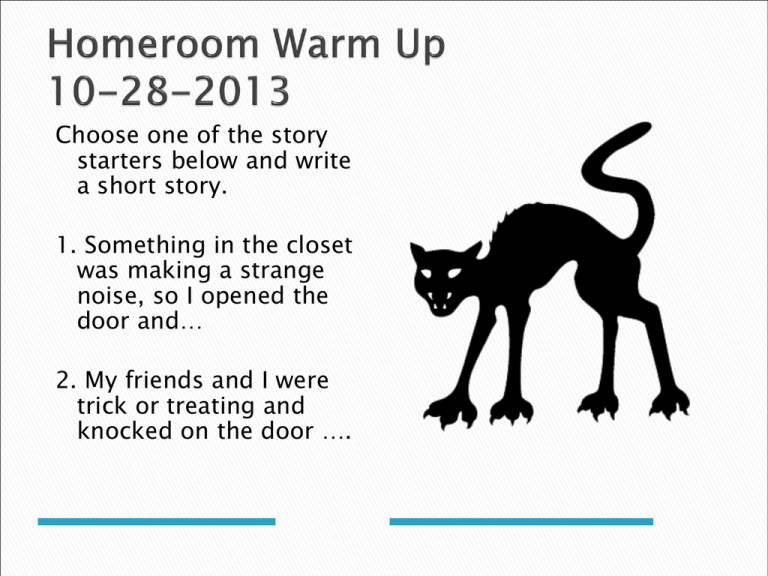
Choose one of the story starters below and write a short story. 1. Something in the closet was making a strange noise, so I opened the door and… 2. My friends and I were trick or treating and knocked on the door …. On this day the Statue of Liberty was dedicated in 1886. Explain what you know about the Statue of Liberty. Why is it such a great American symbol? The diagram below shows a wave. Two points at crests in the wave are labeled. Which of these names the location of a point in the wave that is exactly halfway between these two crests? A. node B. plane C. trough D. phase The two most abundant elements in Earth's core are A. iron and magnesium B. silicon and oxygen C. nickel and silicon D. iron and nickel Page 343 # 1-8 GLE 0707.7.1 Describe the physical properties of minerals. By Ms. Stanford 7th Grade Science A mineral is a naturally formed, inorganic solid that has a definite crystalline structure. Solid Cannot be a liquid or a gas Naturally Occurring Found in nature, not man-made Inorganic Is not alive and never was, non-living Crystal Form A definite structure in which atoms are arranged Each mineral has characteristic properties that can be used to identify it. Color can be used to identify only those few minerals that always have their own characteristic color. If we take one mineral, beryl, and add different impurities, we get different colors A streak is the color of the mineral when in powder form. Another simple test to identify a mineral is to check its luster. Luster is a term used to describe how light is reflected from a mineral’s surface. Large Pyrite Cluster Huanzala, Does de Mayo Province, Peru Each mineral has a characteristic density. Density is how much matter is in a given space. When you identify a mineral, one of the best clues you can use is the mineral’s hardness. The Mohs hardness scale ranks ten minerals from softest to hardest. A mineral can scratch any mineral softer than itself, but can be scratched by any mineral that is harder. A mineral that splits easily along flat surfaces has the property called cleavage. Most minerals do not split apart evenly. Instead, they have a characteristic type of fracture, which describes how a mineral breaks roughly and not along a smooth surface. ◦ ◦ ◦ ◦ Is it non-living material? Is it a solid? Is it formed in nature? Does it have a crystalline structure? Wood Gold Fossil Topaz Bones Granite Quartz Pearls Talc Icebergs Diamond Coal Rock Salt Minerals a) b) c) d) e) f) Gold Topaz Quartz Talc Iceberg* Diamonds Non-Minerals a) b) c) d) Wood - once living Fossils – once living Bone - living material Granite - intrusive igneous rock e) Pearls – made by oysters f) Coal - Sedimentary rock g) Rock Salt – Sedimentary rock According to IMA – ice is listed as a mineral If you break quartz to learn if it splits smoothly in a certain direction, what physical property are you testing? a. hardness b. cleavage c. streak d. specific gravity Silicate minerals contain a combination of the elements a. b. c. d. Sulfur and oxygen Carbon and oxygen Iron and oxygen Silicon and oxygen

